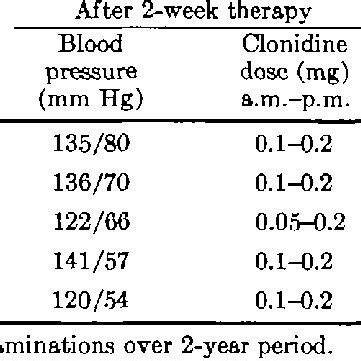Intro
High blood pressure, or hypertension, is a significant health concern that affects millions of people worldwide. It can lead to severe health issues, including heart disease, stroke, and kidney disease, if left unmanaged. Managing blood pressure is crucial to prevent these complications and maintain overall health. One medication that has been widely used to lower blood pressure is clonidine. In this article, we will delve into the details of how clonidine works, its benefits, and its potential side effects.
The importance of managing blood pressure cannot be overstated. Uncontrolled high blood pressure can cause damage to blood vessels, leading to atherosclerosis, which is the buildup of plaque in the arteries. This can result in reduced blood flow to vital organs, including the heart, brain, and kidneys. Furthermore, high blood pressure can also lead to heart failure, as the heart has to work harder to pump blood, leading to fatigue and eventual failure. Therefore, it is essential to manage blood pressure through lifestyle changes, such as a healthy diet, regular exercise, and stress management, as well as medication when necessary.
Clonidine is a medication that has been used for decades to treat high blood pressure. It belongs to a class of medications known as centrally acting alpha-2 adrenergic agonists. Clonidine works by stimulating certain receptors in the brain, which in turn, reduces the sympathetic nervous system's activity. The sympathetic nervous system is responsible for the "fight or flight" response, which increases heart rate, blood pressure, and blood vessel constriction. By reducing the activity of the sympathetic nervous system, clonidine helps to lower blood pressure, reduce heart rate, and decrease blood vessel constriction.
How Clonidine Lowers Blood Pressure

Benefits of Clonidine
The benefits of clonidine in lowering blood pressure are numerous. Some of the most significant advantages of using clonidine include: * Reduced risk of heart disease and stroke * Decreased risk of kidney disease * Improved overall health and well-being * Reduced symptoms of anxiety and stress * Improved sleep quality Clonidine has also been shown to be effective in reducing blood pressure in patients with resistant hypertension, which is high blood pressure that does not respond to other medications.Working Mechanism of Clonidine

Steps to Take Clonidine
To take clonidine effectively, follow these steps: 1. Take clonidine exactly as prescribed by your doctor. 2. Start with a low dose and gradually increase it as directed by your doctor. 3. Take clonidine at the same time every day to maintain a consistent level of the medication in your blood. 4. Do not stop taking clonidine suddenly, as this can lead to withdrawal symptoms. 5. Monitor your blood pressure regularly to ensure that it is within a healthy range.Side Effects of Clonidine

Precautions and Warnings
Before taking clonidine, it is crucial to discuss any medical conditions or allergies with your doctor. Some precautions and warnings to consider include: * Clonidine can interact with other medications, such as beta-blockers and diuretics. * Clonidine can worsen certain medical conditions, such as heart failure and kidney disease. * Clonidine can cause drowsiness, so it is essential to avoid driving or operating heavy machinery while taking the medication. * Clonidine can cause withdrawal symptoms if stopped suddenly, so it is crucial to taper off the medication gradually.Clonidine and Other Medications

Statistical Data
According to the American Heart Association, high blood pressure affects approximately 108 million adults in the United States. Clonidine has been shown to be effective in lowering blood pressure in patients with hypertension, with studies demonstrating a significant reduction in blood pressure in patients taking clonidine compared to those taking a placebo.Practical Examples

Conclusion and Future Directions
In conclusion, clonidine is a medication that has been widely used to lower blood pressure. Its benefits include reduced risk of heart disease and stroke, decreased risk of kidney disease, and improved overall health and well-being. While clonidine can cause some side effects, they are generally mild and can be managed with proper dosage and monitoring. As research continues to evolve, it is essential to stay informed about the latest developments and advancements in the treatment of hypertension.We invite you to share your thoughts and experiences with clonidine in the comments below. Have you taken clonidine to lower your blood pressure? What were your experiences, and what benefits or side effects did you encounter? Your feedback can help others make informed decisions about their health.
What is clonidine used for?
+Clonidine is used to lower blood pressure and treat hypertension.
How does clonidine work?
+Clonidine works by stimulating alpha-2 adrenergic receptors in the brain, which reduces the sympathetic nervous system's activity, leading to a decrease in heart rate, blood vessel constriction, and blood pressure.
What are the side effects of clonidine?
+Common side effects of clonidine include drowsiness, dizziness, dry mouth, constipation, nausea, headache, fatigue, and weight gain.
Can clonidine be taken with other medications?
+Clonidine can interact with other medications, such as beta-blockers and diuretics. It is essential to discuss any medical conditions or allergies with your doctor before taking clonidine.
How long does it take for clonidine to start working?
+Clonidine can start working within a few hours of taking the medication, but it may take several weeks to reach its full effect.
